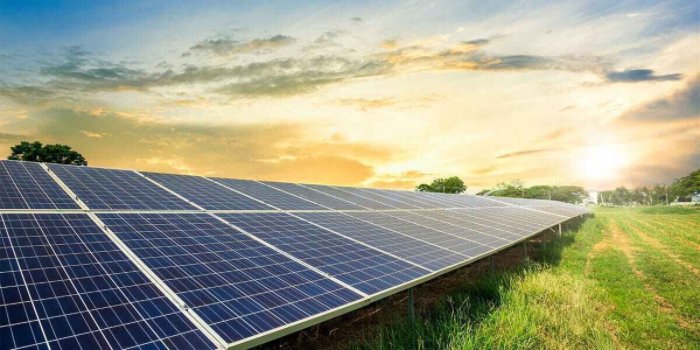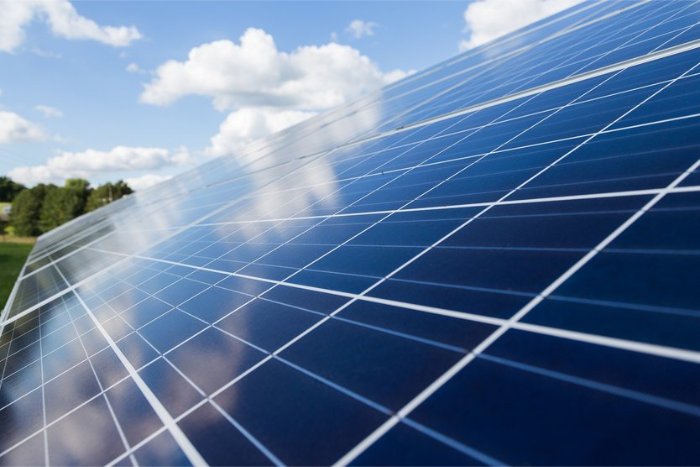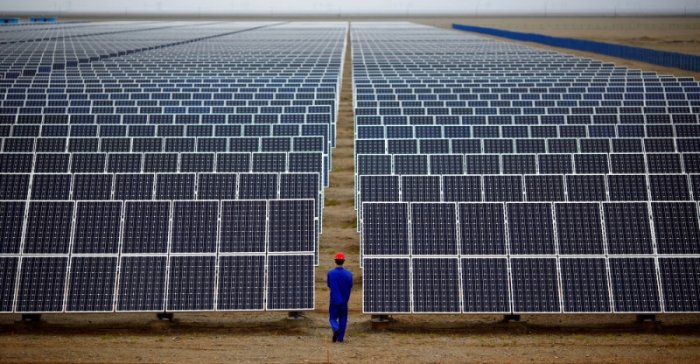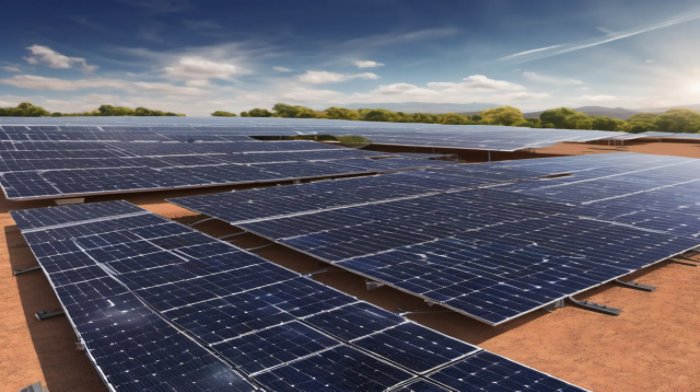Maximize solar panel efficiency by optimizing energy consumption by ensuring correct orientation and tilt, keeping panels clean, optimizing inverter performance, minimizing shading, monitoring and maintaining system performance.
Ensure correct orientation and tilt
Maximizing solar panel placement is crucial to increasing energy production. The correct orientation and tilt of the panels contribute significantly to making them work more effectively. The following are some important pieces of advice on this issue:
Orienting the Panels
In the northern hemisphere, the panels should be installed facing south, and in the southern hemisphere, they should be oriented to the north. It can ensure that the sun reaches the solar panels for the longer part of the day. NREL research shows that proper orientation can increase energy generation of the panels by up to 20%. In this way, the trajectory of the sun’s path is used, and the solar panels are standing perpendicularly to it throughout the day so that the maximum of sunlight falls on them.
Tilting the Panels
The tilt needs to be adapted to the location of a site primarily based on latitude. For instance, if it is situated where the latitude is 30 degrees, the angle of the solar panels also needs to be 30 degrees. According to the IEK-3 study, it can increase energy production by around 15%. The panels need to be in the position to receive sunlight perpendicular to their surface at any time throughout a day. The JSOL-2013 article also argues that the angle of the solar panels is positively correlated with energy output.
Using Solar Tracking Systems
It is recommended to install solar tracking system s that will move the solar panels as the sun travels the sky. IEA research showed that using tracking systems can increase energy production by up to 25%. They would make the panels tilt in varying directions to the point where the sun is at the moment, meaning they will not stand perpendicular to the surface of the ground. Data-capturing research reflects the same opinion. In such cases, the solar tracking system accounts for higher energy production per panel.

Keep the panel clean
In order to keep solar panels clean and efficient, they should be cleaned on a regular basis. Here is a guideline that may be of help:
-
Maintain a regular cleaning schedule: Dust, dirt and debris should not be allowed to accumulate on the solar panels. You should, therefore, make a point of cleaning them at least once every 1-2 months. Clean your panels more regularly if you live in an area where it is dusty or if you receive heavy rains that are likely to leave dirt residue. Research conducted by the National Renewable Energy Laboratory indicates that dirty solar panels produce up to 5% less energy than they would in case they were cleaned.
-
Ensure you are using the right cleaning materials: When you set out to clean solar panels, make sure you are using a soft sponge or cloth. In addition, make sure you are using a mild detergent and warm water. Avoid using harsh chemicals or rough materials to avoid scratching and damaging the panels. Rinse the panels thoroughly after cleaning and ensure no soap is left on the panels, as this may cause some warming and reduce energy production . According to studies detailed in the Journal of Renewable and Sustainable Energy, using the appropriate cleaning method can result in the production of 3-5% more energy.
-
Use automated cleaning systems for large scale solar installations: If you have a number of solar panels covering a large area or some of the panels are not easily accessible to you, you should consider investing in automated cleaning systems. According to research done by the International Energy Agency platforms that automatically clean solar panels can result in the production of 10% more energy than where manual cleaning is done.
monitor the amount of power
-
Remove snow and bird dropping on time: If you have solar panels that are constantly exposed to falling snow, you should make a point of regularly removing the snow to ensure that the sunlight reaches the panel. Bird dropping produces a similar effect and should also be cleaned as soon as possible. Research conducted on a variety of bird dropping has shown that the panels will still be shaded even when less than 1% is covered.
-
Observe safety precautions: When setting out to clean the solar panels, observe all safety precautions. This is specifically important for people with panels that are not easily accessible. The Occupational Safety and Health Administration estimates that the risk of falling while cleaning solar panels that are located on sloping roofs is quite high. Safety precautions when working on sloped roofs include; making sure you have a ladder that is on the same or similar angle as your roof, wear a harness, and also wear shoes that are appropriately constructed in order to avoid slips. Finally, remember that the panels tend to be very hot and working on them or cutting them may lead to breakage. .
Minimize shadows
Reducing shadows on solar panels is essential in increasing the overall energy output. The following are effective ways to minimize shadows and optimize solar panel functionality.
Optimal panel placement
Most solar panels are set on rooftops and in backyards of houses, building and any other structures in the compound .You need to position your solar panels in places where they are free from any shadow covering across any range of distance. The best site for you to put your solar panels is on the top of your storey building since shadows might be caused when a building with a larger floor covers the roof top then it shades your solar panels.if you get your solar panels getting shaded from trees it wise to cut off the leaves and trees themselves to avoid the shade.
Trimmed trees and vegetation
Trees that shade the solar panel should be removed .this can be done by pruning or cut the whole plant down, it is easy to prune. Consider removing trees surrounding the solar panels to make them free of emanated shadow. A study by NREL found out that trimming off all trees within a distance of 30feet can be contributing up to 5% more solar power produced.
Shade structures
It can be good for you to consider use of a shade structure over the already mounted solar panel to prevent any shadow by adamantly constructed shed over the roof. Use lighting analysis tool to aid you in the level of shading your roof top is going through.
Use of microinverters or power optimizers
Unlike in string inverter, the job of microinverter or power optimizer ensures for each panel there is production of direct current from the direct sunlight through reducing losses in current and voltage registering up to 10% added power production.
Solar panels on a tilt
The tilted are adjustable, when the sun is reistriced by a house of a building with a plate on the walls the sun comes from top hence it is blocked. Panel can be tilted if at all there are any other obstructions .Making a solar panel not be perpendicular to the earth helps on retaining more sun light throughout the year.
Regular maintenance
It is always advisable of one to always monitor if their solar panel is under any shade which prevents heat and lighting which will help you in its full functionality.

Optimize inverter performance
Therefore, for solar panel systems to have enhanced performance and optimal energy conversion from DC to AC power, the overall efficiency of their inverters must be maximized. Here are effective techniques to optimize inverter performance:
-
Choosing highly efficient inverters
-
Right sizing of inverters
-
Implementing the maximum power point tracking technology
-
Ensuring proper ventilation and cooling
-
Regular maintenance checks
-
Monitoring inverter performance
Choosing highly efficient inverters
Rely on inverters that present maximum energy efficiency in converting DC power from solar panels to AC power . Inverters that have over 95% efficiency reduce the energy loss that occurs in the process of converting DC to AC power. However, the Solar Energy Industries Association looks at such efficiency of inverters in a system as capable of enhancing the overall performance of a solar panel system by up to 5%.
Right sizing of inverters
These could either be under-sized or over-sized. An under-sized inverter will not efficiently handle all the energy demands of a solar panel system, while an over-sized inverter will be inefficient as it operates at low levels of power. Work with solar professionals in choosing the best size of inverter that is parallel to the capacity of the solar panel array.
Implementing maximum power point tracking technology
Incorporate MPPT technology in a solar panel system to optimize energy output in variable weather conditions . The technology allows the solar panels to continuously adjust the points of power production in the event of partial shades of sunlight. In this regard, studies have shown that the resulting efficiency factor of inverters that work with MPPT technology in energy production against that produced by inverters with a fixed voltage can give up to 30% more output and efficiency level.
Ensuring proper ventilation and cooling
Investing in cooling systems or installing inverters in well-ventilated areas enhances the overall efficiency of a solar panel system. Recycling the energy is efficient in hot climate regions where inverters are heavily used and the hot air generated during power conversion cannot escape to the atmosphere; rather, it is recycled to the fan. area.
Monitor and maintain system performance
While regular monitoring and maintenance are generally effective in ensuring that system remains in good condition, there several downsides. To start with, the upfront and recurring costs associate with these activities are prohibitive. Secondly, these activities are labor-intensive and require technicians that are trained to identify potential issues and come up with correct workarounds. As such, these activities do not guarantee that the system will not unexpectedly fail. Nevertheless, the following are six potentially effective techniques that can be used to maintain and monitor your solar system .
Implement Real-Time Monitoring Systems
Usually, real-time monitoring includes the installation of systems that will constantly monitor your system’s performance. The resulting data is then analyzed to determine the overall efficiency of the system help identify potential problems with the system and show ways in which the system may be enhanced. While this data can allow one to predict problems beforehand, the overall energy production will provide the most important information and can be an indicator when systems are not maintained and operate less efficiently.
Conduct Regular Inspections
Regular inspections designed to identify when a panel appears worn or its connections have started to fail, when wiring becomes exposed, how rusty our mounting screws are and our connections are corroded serve a primary role in predicting system’s potential failure. Importantly, through constant monitoring of how the entire system is performing, one is also able to predict and determine when panel’s energy production fall. This is important since presence of the initial indicators can alert you when our system needs to be clean.
Clean Panels
Cleaning panels is another important way of maintaining and monitoring system . Like with regular inspection and monitoring of a downward trend, cleaning panels when there is need is critical since clogged up modules essentially reduce the overall energy production.
Consider advanced technologies
Perovskite and cadmium telluride solar cells
Perovskite and cadmium telluride solar cells are some of the rapidly emerging and highly efficient solar cells in the market today. Perovskite solar cells have efficiency levels that are over the 25 percent mark as opposed to the conventional silicon solar cells . In addition, perovskite cells are cheap to manufacture. On the other hand, cadmium telluride solar cells convert sunlight into electricity much faster and more efficiently as compared to the silicon solar cells. This alternative is also cheaper to manufacture.
Smart solar panels
Smart solar panels come with sensors and communication links to control and manage individual panels. These sensors assist in determining when to tilt the solar panel to enable it get more sunlight . Unfortunately, these systems produce limited electricity. However, the solar panel can be used to gauge the most suitable and efficient angle of tilt for other solar panels. As such, they intelligent solar panels can be of assistance to our solar systems.
Solar paint and coatings
Solar paint is ordinary paint that is coated with photovoltaic nanoparticles to convert light into electricity. The coated roofs, walls or windows absorb sunlight and convert the energy into electricity . This alternative can be used to generate power from different places such as buildings, cars, cloths, etc.
Floating solar arrays
Floating solar arrays are generally installed on water surfaces such as dam reservoirs, ponds and lakes. The energy equipment is used in this form are very efficient and have concentration levels of over twenty percent . In addition, this arrangement allows the solar energy equipment to use the cooling that effect water bodies provide to solar panels. Examples of this technology in the world today include the 13.7 MW floating solar array in Koyashizurumi Dam in Japan.
Solar roof tiles and windows
These are special roofing and window materials made to look like ordinary roof tiles and windows. They act by trapping energy from the sun that is later converted into electricity that is used to power different home appliances_NODES . For instance, Tesla manufactures solar roofing that facilitate the trapping of solar energy.
Solar hot water
The equipment and technology is used to convert sunlight into electricity used for heating water that is stored is special storage water tanks. This option eliminates the need for traditional electricity for water heating .

Optimize energy consumption
Using Solar Panel
A need for accessing a solar panel system is one of the factors for energy consumption that needs to be optimized. Use of solar panels is an efficient way of conserving energy and utilizing it for different purposes. For solar panel systems optimization, the following practical techniques need to be implemented:
-
Using energy-efficient appliances: Replace existing appliances with energy-efficient appliances in the home or business. Appliances that have the ENERGY STAR ratings minimize the usage of energy but do the same task as the non-energy-efficient appliances. For instance, replacing an old refrigerator with a new energy-efficient one saves up to 15% of the energy costs . Energy-efficient appliances should be used for all appliances in the home and facilities to reduce the overall energy consumption.
-
Using LED lighting: Replace all the incandescent lamps with LED lighting. Incandescent lighting is among the largest sources of energy wastage. LED lighting uses up to 75% less energy and can last up to 25 times more than the incandescent lamps. This way, less power used, and electricity utility bill is reduced.
-
Using programmable thermostats: Purchase programmable thermostats to be used for the heating and cooling systems within a facility. The thermostat reduces energy usage within a facility by reducing usage when cooling or heating is not needed by an individual. Specifically, the programmable thermostats reduce the heating and cooling costs within a facilities by up to 10% .
-
Using smart home automation: Smart home automation facilitates monitoring and regulating the energy used in home and business facilities. For instance, using thermostats that are controlled automatically to reduce energy usage and increase efficiency. Smart plugs and smart power strips also automate the energy usage within homes and facilities, ensuring energy is used at the right time and in the right amounts.
-
Conducting energy audits: Schedule energy audits by energy auditors to facilitate the determination and solving of the energy usages problems within facilities. Conducting audits by professionals reduces energy used in areas where it is being wasted and used inefficiently.
-
Educating occupants on energy usage: Educating people in the home or facilities on the importance of switching off lights when not in use is a way to optimize energy use. Additionally, electricity plug-in usage should be minimized by advising occupants to switch off the plug when appliances are not in use. Opening the windows is a way of using natural light and ventilation to reduce the use of electricity.
Final decision
Accessing a solar panel system and usage of energy from other sources is a waste of energy in the absence of the necessary techniques for optimizing the energy used. Techniques in this paper are useful and can be applied to homes and facilities to minimize energy usage by various appliances.



